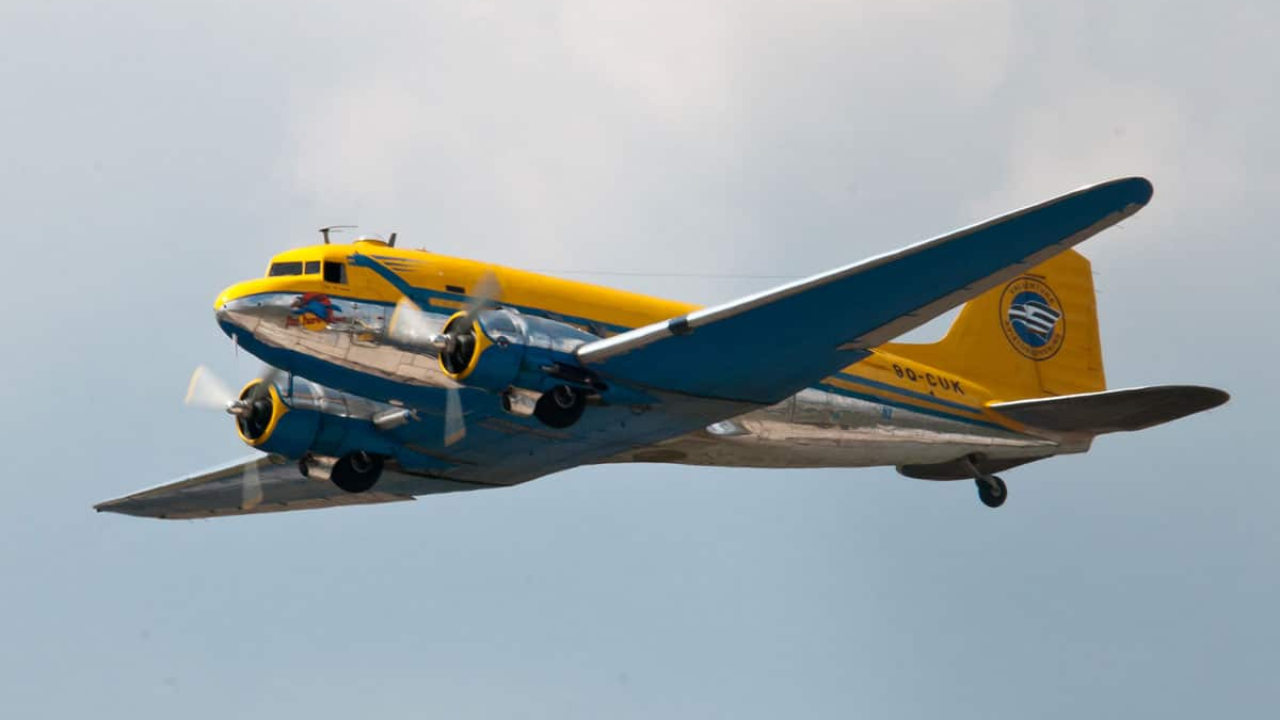It is generally agreed that the Douglas DC-3 was among the most significant innovations in commercial passenger aviation. As soon as it entered service in 1936, the Douglas DC-3 demonstrated its prowess as a passenger aircraft.
The Douglas DC-3, similar to its military counterpart the C-46 Skytrain/C-53 Skytrooper, maintained operational status for decades in a variety of capacities. However, why was the DC-3 so exceptional? This article will examine how the DC-3 irrevocably transformed air travel.
Development and Early Years
CEO C.R. Smith of American Airlines directed the development of the Douglas DC-3. Smith aspired to furnish American Airlines with a long-distance sleeper aircraft capable of ferrying passengers throughout the United States. Building upon the pre-existing platform of its progenitors, the Douglas DC-1 and DC-2, the Douglas DC-3 was constructed. Offering 14–16 berth dormitory configurations and a 21-seater ‘daytime’ airliner, it was more capacious than its predecessors.
The DC-3, which debuted on 26 June 1936 with American Airlines, immediately distinguished itself from other commercial aircraft of its time. Soon thereafter, airlines worldwide, including those in Europe and South America, would acknowledge the dynamic aircraft’s extraordinary capabilities. As of the outbreak of the Second World War, the DC-3 had been operational on an international scale.
What Made the DC-3 Such a Success?

Related: Trenton-Mercer Is Happy to Have Holiday Travelers!
Before the DC-3, it was difficult for airlines to generate commercial revenue from long-distance passenger aircraft. The DC-2, the forerunner of the Douglas DC-3, had made significant strides in meeting the airlines’ objective of developing an aircraft capable of accommodating over ten passengers for extended journeys.
Nonetheless, it was not optimal. A constraint of the DC-2 was its cabin’s inadequate width to accommodate side-by-side accommodations.
By incorporating an additional 60 cm of cabin width, the Douglas DC-3 enabled airlines to accommodate a greater number of seats and sleeper accommodations for extended journeys. Additionally, it was equipped with significantly more potent Pratt & Whitney Twin Wasp engines, with each engine generating 1,200 horsepower. In contrast, the DC-2 was outfitted with two engines that produced a combined output of 875 power.
The Douglas DC-3 achieved a maximum cruise speed of 207 miles per hour with its upgraded engines, which, although considered sluggish in modern standards, was remarkable for a 1930s airliner of its magnitude. Additionally, with a range of 1,500 miles and the ability to operate on short runways, the piston-powered aircraft was suitable for transcontinental flights across the United States.
However, in contrast to other aircraft of its time, such as the Boeing 247, the operational legacy of the DC-3 is undeniably extensive. Ultimately, 607 DC-3 aircraft would be constructed, whereas only 75 Boeing 247s would be operational.
The Douglas DC-3’s Military Career
Due to its adaptability, simplicity, and dependability, the Douglas DC-3 was quickly mobilized during World War II. For military purposes, the DC-3 was predominantly transformed into the C-47 Skytrain. Also constructed was a specialized personnel transport variant known as the C-53 Skytrooper.
The C-47 served as an integral component of the Allies’ cargo infrastructure throughout World War II, facilitating the transportation of personnel, cargo, and an extensive array of additional provisions. During the Vietnam War, the Skytrain continued to transport cargo and other materials, extending its military service beyond World War II. Certain C-47 aircraft were even converted into minigun-equipped gunships.
Surprisingly, the C-47 Skytrain was still in use by the United States military as of 2008, when the 6th Special Operations Squadron decommissioned its final C-47, a C-47 Dakota manufactured in Great Britain. Despite the C-47 Skytrain’s retirement from military service, numerous Douglas DC-3s continue to function in civilian capacities across the globe.
Basler, a manufacturer based in Oshkosh, Wisconsin, introduced the BT-67 in 1990 as a remanufactured variant of the DC-3. Presently, BT-67s continue to function as multipurpose aircraft for air forces worldwide.

